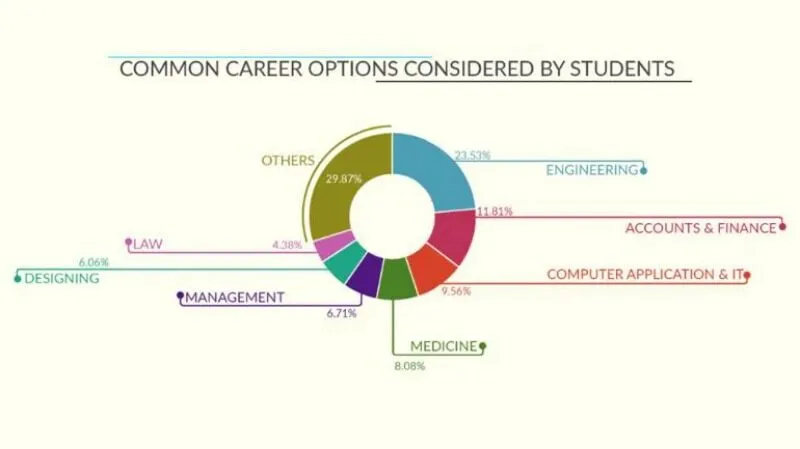High school is a time of immense growth and exploration, but it’s also an opportune period for students to start considering their future. While the excitement of new experiences can sometimes overshadow future planning, taking steps to create a career path early on can shape a student’s trajectory in profound ways. This article discusses the importance of career planning for high school students and outlines strategies for building a career roadmap.
Establishing a forward-thinking framework for success
When high school students create a career path, they are essentially crafting a roadmap that helps guide their future decisions. Instead of wandering through career options without direction, students who take the time to develop a plan are more likely to focus on activities, courses, and extracurriculars that serve their long-term objectives.
With a clear framework in place, students can make more informed choices about their high school coursework. For example, students with a keen interest in medicine may prioritize biology and chemistry, while aspiring engineers might take advanced math and physics. Building this framework helps students stay on track and set themselves up for future opportunities.
Unveiling focus and igniting enthusiasm
Taking the initiative to create a career path offers students a clearer vision of their aspirations and, as a result, heightens their motivation. When students know where they want to go, they are more likely to stay engaged in their studies. A student who dreams of a future in architecture, for instance, will likely feel more energized to perform well in relevant subjects such as geometry or design.
This sense of purpose not only drives academic success but also impacts decisions about extracurricular activities. Students can focus on clubs, internships, and volunteer work that align with their goals, ensuring that their time is spent on meaningful experiences that contribute to their long-term ambitions.
Standing out during higher education applications
An important but often overlooked benefit of starting early to create a career path is its impact on college applications. Colleges increasingly favor applicants who demonstrate a clear vision for their future and have taken tangible steps toward achieving it. Students with a well-thought-out career plan are more likely to stand out from their peers.
When students are able to connect their high school experiences—whether through part-time jobs, leadership roles, or community service—to their future career goals, they appear focused and driven. Admissions officers appreciate students who show foresight and commitment, making them more competitive candidates for scholarships and selective programs.
Setting the course with SMART objectives
One of the most effective ways to create a career path is through setting SMART (Specific, Measurable, Achievable, Relevant, and Time-bound) goals. SMART goals provide students with a structured approach to breaking down long-term ambitions into manageable steps. For instance, a student interested in law might establish short-term goals such as participating in debate clubs or completing internships, while long-term objectives could involve applying to top law schools.
SMART goals give students a concrete sense of direction and help them stay on track. By achieving smaller milestones, students gain the confidence and assurance that they are moving toward their larger career objectives.
The impact of mentorship on career direction
Mentorship plays a crucial role in helping students create a career path. Guidance from professionals or educators in a student’s field of interest can provide invaluable insights into the steps required for success. A mentor can offer real-world advice, share knowledge about challenges within the profession, and guide students toward resources they may not have considered.
Students should proactively seek out mentors within their school or community who can offer support and advice. A strong mentor-student relationship helps clarify career goals and provides connections to internships, networking opportunities, and hands-on experience that are essential for growth.
Navigating career pivots and shifts
While early planning is beneficial, it’s important for students to understand that their career path may evolve over time. When students create a career path, they are laying the groundwork for future decisions, but that doesn’t mean they are locked into a single trajectory. As students explore different subjects and gain new experiences, they may discover fresh interests or refine their goals.
Regular self-reflection is a critical part of the process. A student who initially wanted to pursue engineering might find a passion for business after taking an economics course, leading them to adjust their career plan. Flexibility is an essential component of career planning, and students should feel empowered to make changes as they grow.
Weighing the financial side of career planning
When students create a career path, they must also consider the financial implications of their chosen field. Some careers require significant investments in education, certifications, or specialized training. By starting early, students can explore scholarships, financial aid, and budgeting strategies to ensure that they are financially prepared for their career journey.
Understanding the financial aspects of career planning is crucial for making informed decisions about higher education or vocational training. With proper planning, students can avoid unexpected financial burdens and make strategic choices about where and how they pursue their education.
Networking: Building connections for the future
Networking is a powerful tool in career planning and should be a priority for students as they create a career path. Building a professional network during high school can open doors to future opportunities. Students can begin networking with teachers, professionals in their chosen field, and even through online platforms like LinkedIn.
Networking provides students with exposure to different career paths and valuable advice from professionals. Beyond gaining insights, building strong relationships early on can lead to internships, mentorships, and job opportunities. Starting to network early gives students a competitive advantage as they prepare to enter the workforce.
Final thoughts: Shaping a successful future through early planning
In conclusion, making the decision to create a career path during high school provides students with a structured approach to shaping their future. Through early planning, students can gain clarity, reduce stress, and set meaningful goals that guide their academic and extracurricular choices. Setting SMART goals, finding mentors, building a network, and considering financial aspects are all essential steps in the process.
Ultimately, creating a career path is more than just a roadmap for success—it is a long-term investment in personal and professional fulfillment. By taking the initiative early, students can build a strong foundation that sets them on the right path toward achieving their career aspirations and living a fulfilling life.


